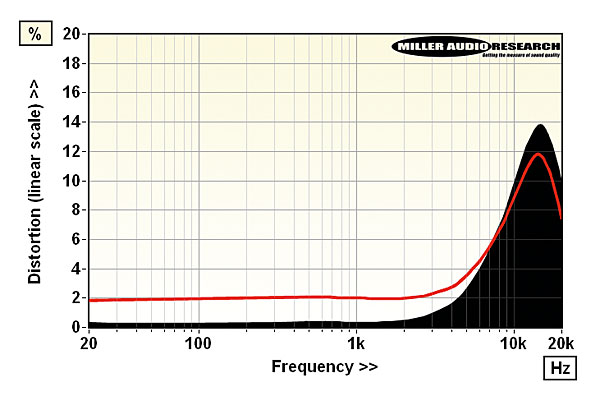AVID Boron Cartridge Lab Report
This, to all intents and purposes, is AVID's flagship MC [HFN Nov '20] but with the ruby cantilever replaced by a boron rod of equivalent length. It shares the same 3x70µm 'micro-ridge' diamond, suspension and 9g bodyweight, yielding (you guessed it) the same low 9cu compliance for compatibility with higher (11-16g) effective mass tonearms. Again, AVID has limited the coil windings – the impedance is a low 4.5ohm – to reduce its moving mass, but this also limits the output that can be generated. Its 0.32mV/1kHz (re. 5cm/sec) is identical to the Ruby, as is the 23-28dB (20Hz-20kHz) stereo separation, though channel balance was a tighter 0.1dB from this Boron sample. Once again, the Boron's VTA looks closer to 30o than the usual 20-24o and while its 'stiff' compliance is unchanged it's not quite as secure a tracker as the Ruby Reference, achieving ~70µm via the left/right channels and just letting go at the penultimate +15dB groove modulation (re. 315Hz/5cm/sec) at ~1% THD.
However, when it comes to frequency response and THD, the specific resonances and damping properties of boron versus ruby play out to yield very individual results. The slight asymmetry in AVID's generator is once again revealed in the 'hotter' right channel but here the 'kick' is a milder +2.3dB at a higher 16kHz on lateral (L+R) cuts coupled with a –0.9dB presence dip on vertical (L-R) grooves [solid traces, Graph 1]. The left channel [dashed traces] has less overall treble energy (–3.0dB and –1.6dB/20kHz, lateral and vertical) while distortion is uniformly lower on both channels compared to the Ruby. Via the right channel, HF distortion peaks at 14% via the Boron versus 20% with the Ruby (–8dB re. 5cm/sec), as illustrated in Graph 2. PM


| Generator type/weight | Moving-coil / 9.1g |
| Recommended tracking force | 18-22mN (20mN) |
| Sensitivity/balance (re. 5cm/sec) | 317µV / 0.1dB |
| Compliance (vertical/lateral) | 9cu / 8.5cu |
| Vertical tracking angle | 30 degrees |
| L/R Tracking ability | 70μm / 70μm |
| L/R Distortion (–8dB, 20Hz-20kHz) | 0.47–17.5% / 0.35–13.8% |
| L/R Frequency resp. (20Hz-20kHz) | +0.4 to –2.4dB / –0.2 to +2.3dB |
| Stereo separation (1kHz / 20kHz) | 28dB / 23dB |
| Price | £4000 |
























































